Inside Designer Darryl Carter’s Sophisticated D.C. Townhouse
darrylcarter.com
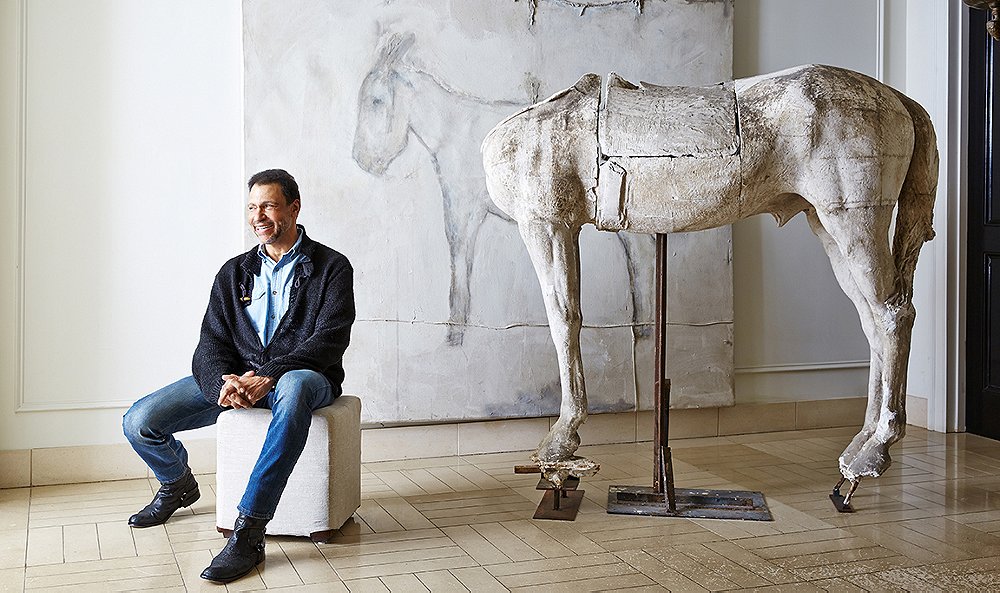
Renowned designer Darryl Carter bought his Washington D.C. home in 1997 in part for its unusual flat-front Beaux Arts facade. It was once the grand home of the chancellery of Oman. “The bones were there, but the space needed obvious cosmetic changes,” says Darryl. “And of course there was gray carpeting as far as the eye can see.”
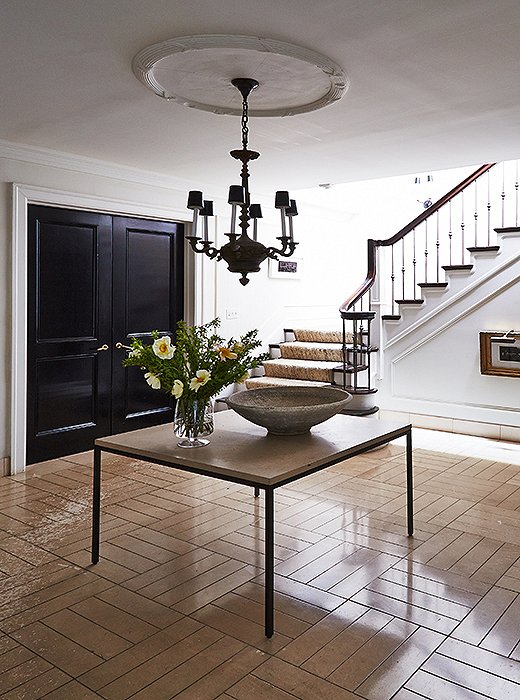
The self-described purist saw to it that the home’s generous proportions were restored before turning his attention to the decor. His key tenets—a neutral but carefully considered palette, an elevated blend of the classical and the modern, and the pursuit of timeless, not trend-bound, designs—are evident throughout.
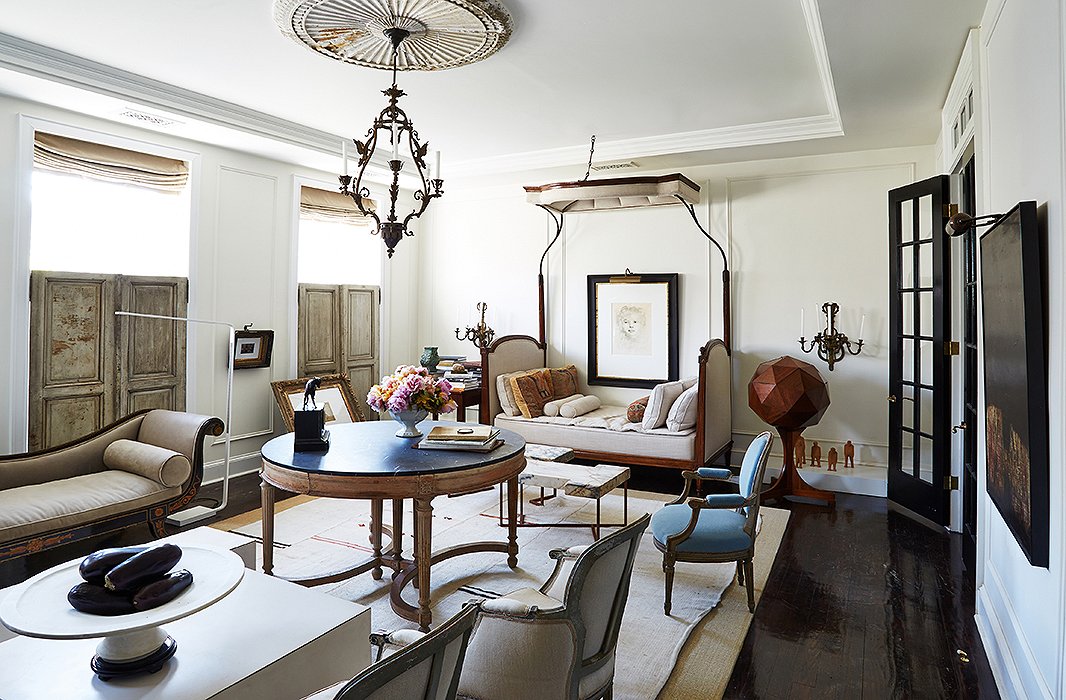
“White is generally the most sublime backdrop for beautiful objects,” the designer asserts. And while his interior color scheme was characteristically restrained (Darryl Carter for Benjamin Moore paint colors were used), his imagination was not.
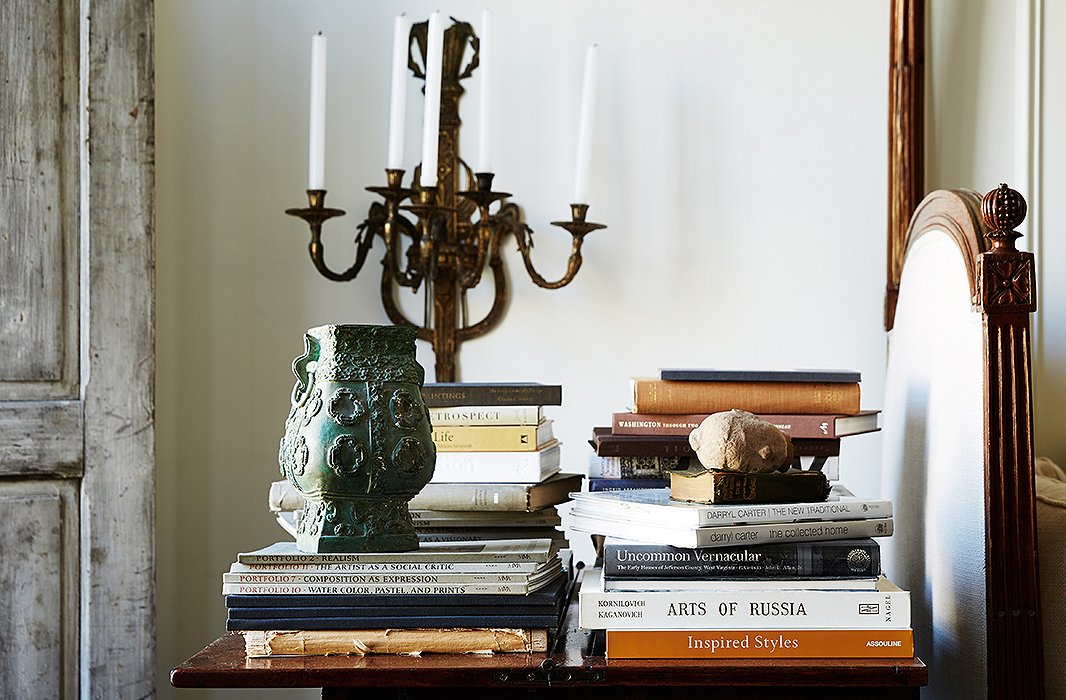
Whether it’s primitive figurines or a canopied bed, visual delights abound—the pale foundation making them all that more impactful. “Some were acquired during travels, some were commissioned under my care, and some were gifts—all meaningful to me in some way or another,” he says.
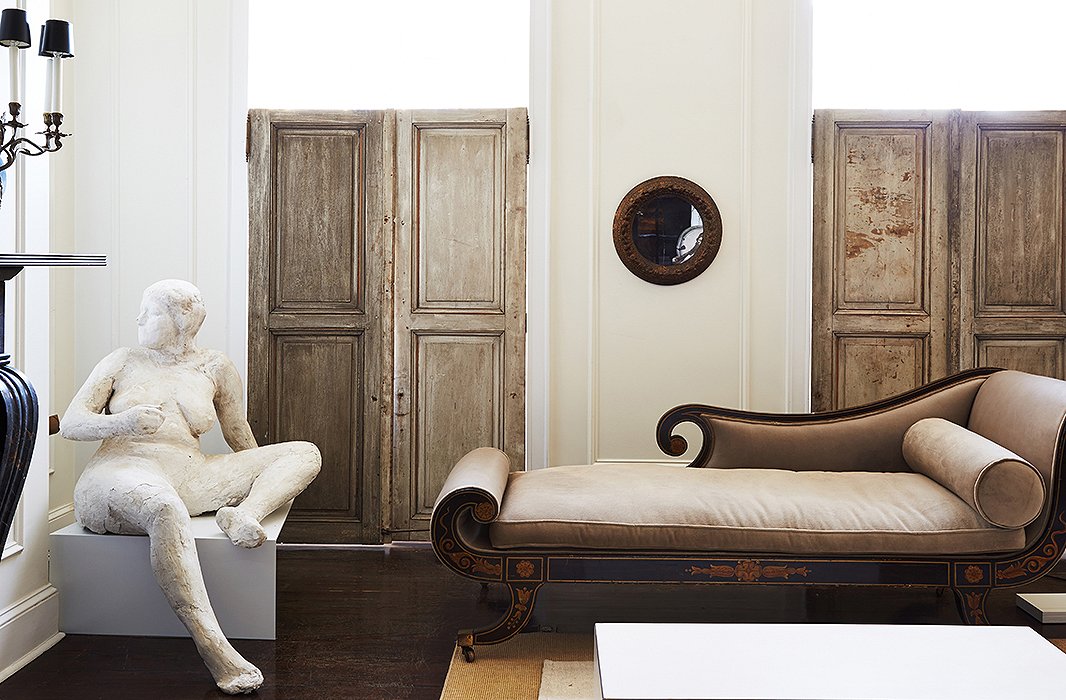
It’s hard to imagine the designer ever considered another walk of life, but “decorator” is, in fact, Darryl’s second act; he began his career as an attorney. “Even during my time as a lawyer, I would recreationally flip properties,” he reveals. “One of them, in 1997, landed on the cover of Metropolitan Home magazine. I suppose you could say that my career found me.”
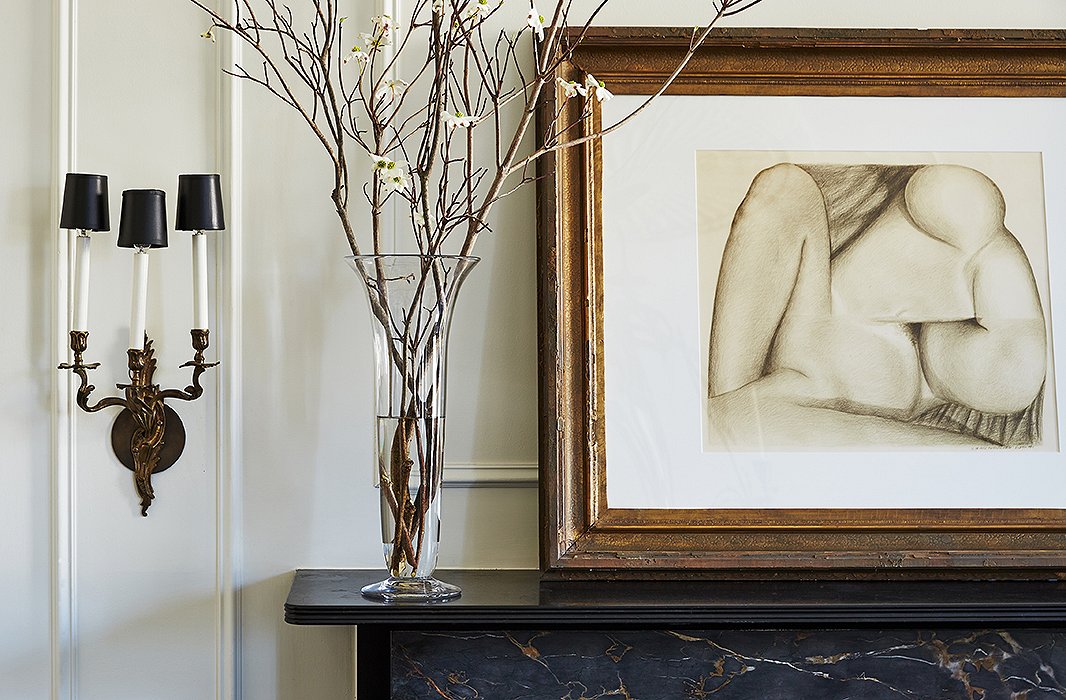
While Darryl has happily called this space home for the past 18 years and has no plans to leave it, his interiors may have an expiration date. “I imagine this is the case with most designers. Your own home tends to become a laboratory,” he says.
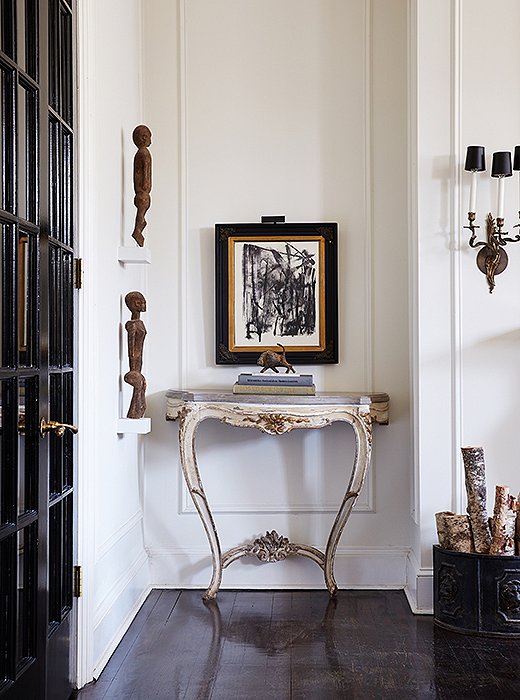
“The house has entirely changed on multiple occasions.” In some instances, he has moved from his tendency for the spare to the polar opposite (case in point: the over-the-top daybed in his living room). “It was more practical than the former grand piano that I didn’t play,” he says. “So I traded a beautiful object for a beautiful object you can sit on.” Whatever his home’s future holds, it’s a given that the welcoming spirit will always remain.
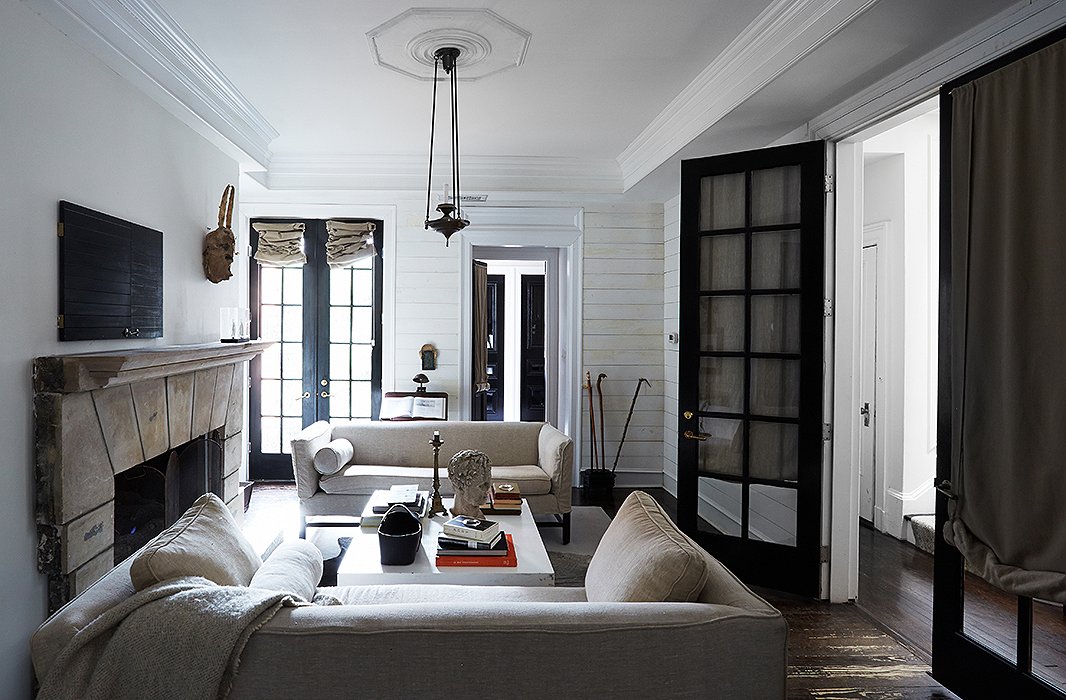
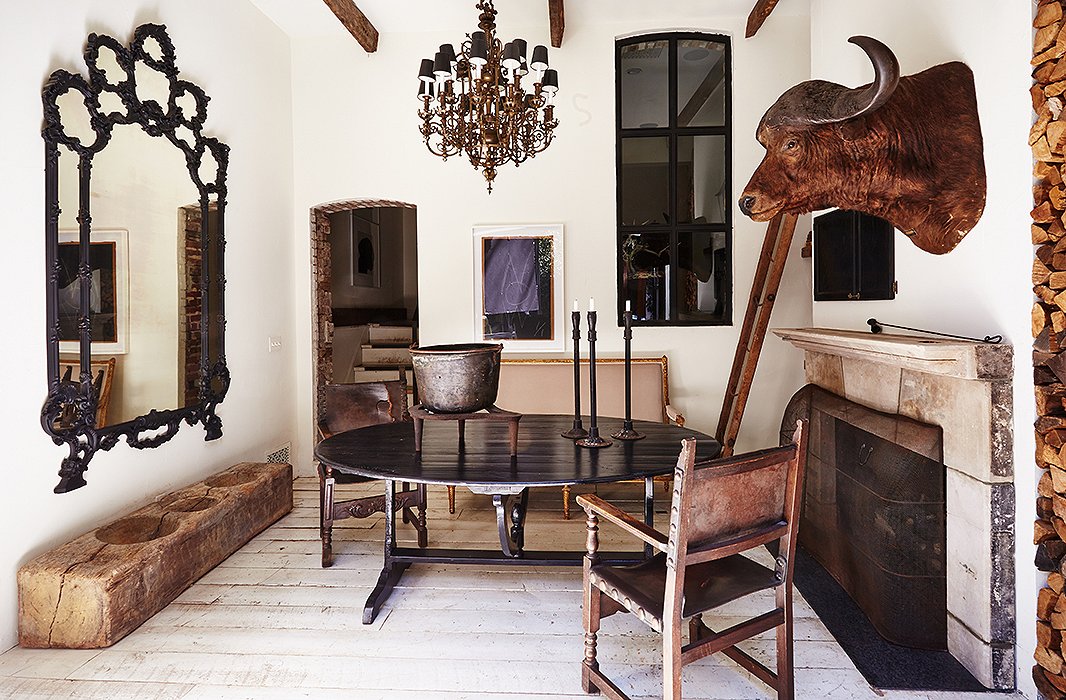

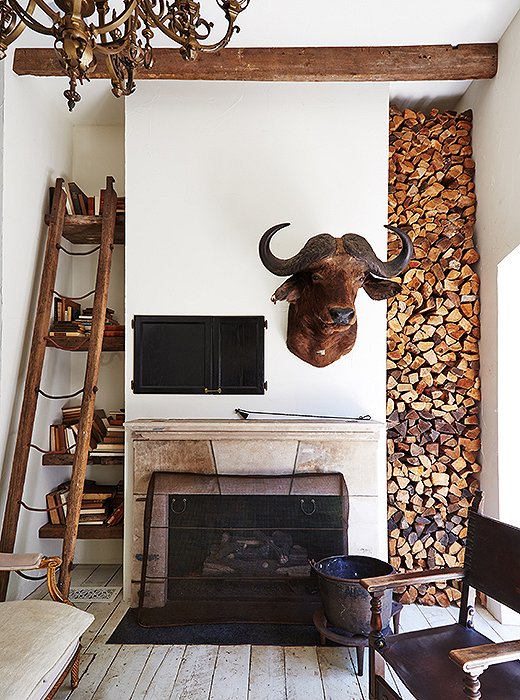
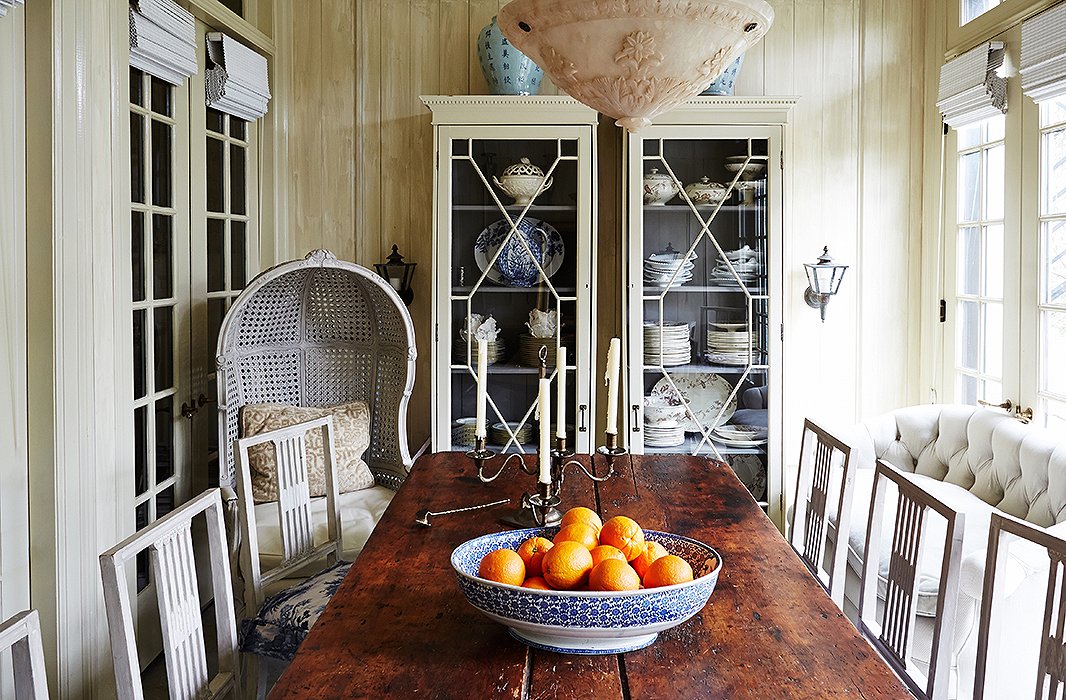
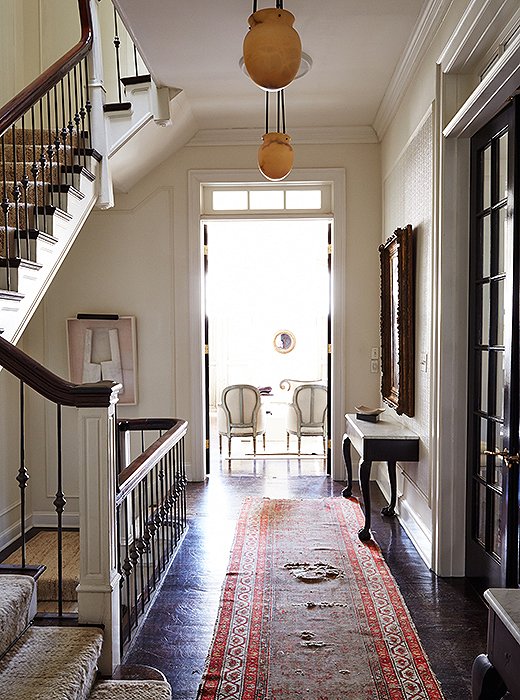
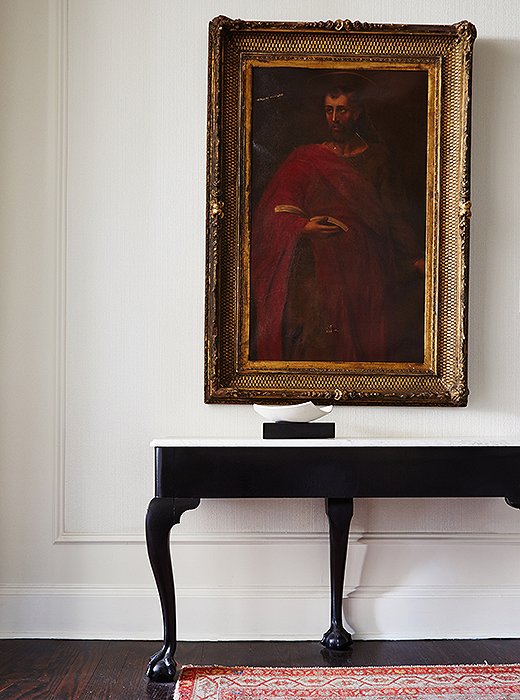
Delicate details make all the difference: Here, on the second-floor landing, the picture molding surrounds a highly textural woven wallpaper hand-painted the same color as the walls. “It’s one more subtle detail that makes a space feel more intimate,” Darryl notes.
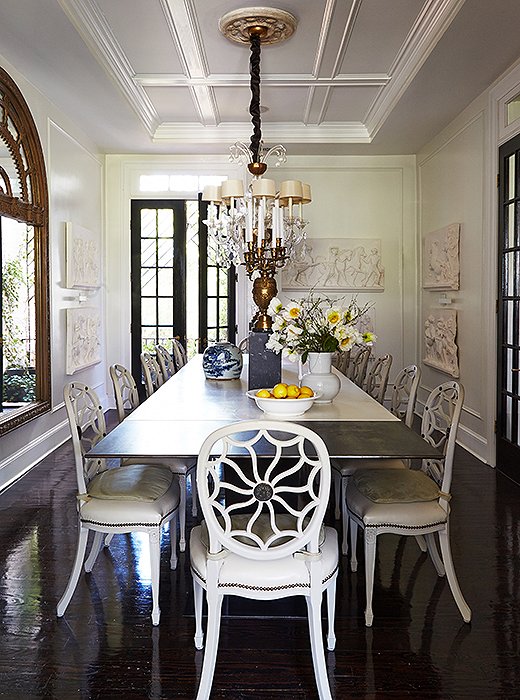

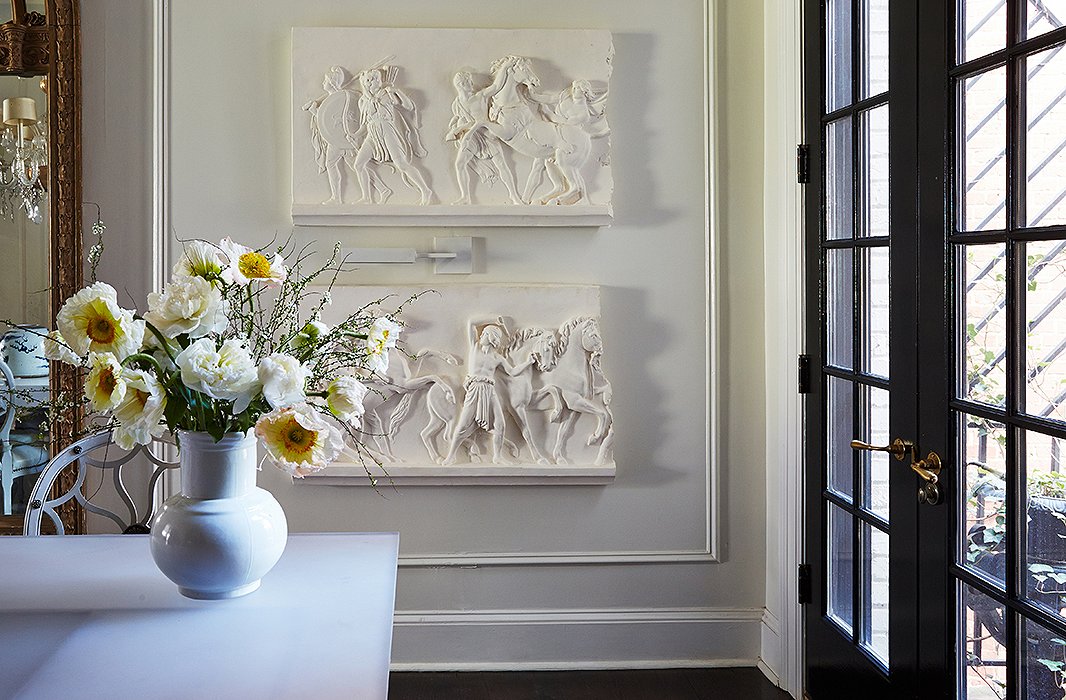
Known for his studied eye for art, antiques, and artifacts, Darryl commissioned a local plasterer to recreate these cast friezes inspired by the painting Entry of Alexander into Babylon. “To be clear, I would never place art as a decoration in a room. I would far more be prone to design a room around the art.”
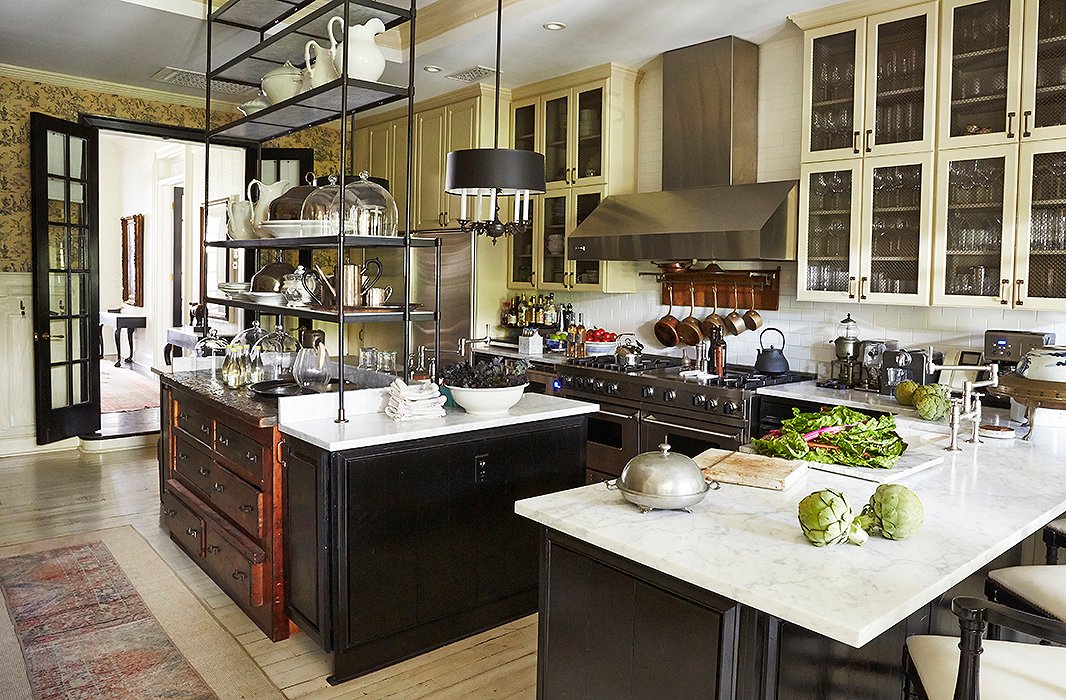
With an impeccably designed kitchen—reclaimed hardwood, black lacquered cabinets, Carrara marble counters, an iron étagère atop the island, a state-of-the-art range—you might expect Darryl to be a master chef.
Au contraire. “I do not cook. At all. Anything,” he says with a laugh. “I will occasionally do the dishes.”
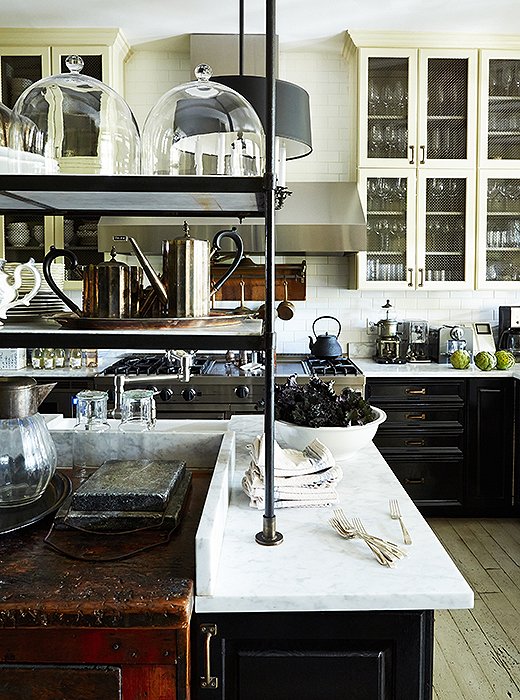
“I love to host,” Darryl says. “Most often, I am the venue, and one of my friends is the chef. They like to complain how challenging it is to prepare a meal here because I don’t know how to tell them where anything is,” he laughs.
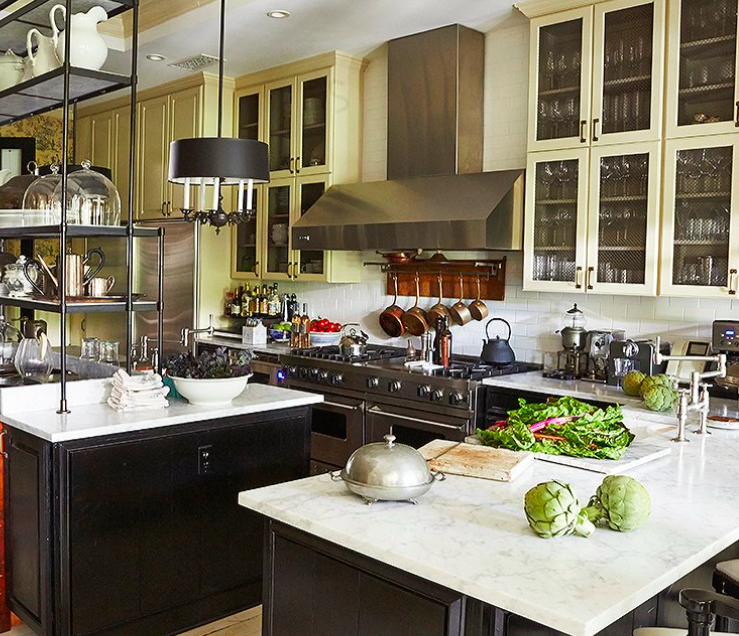
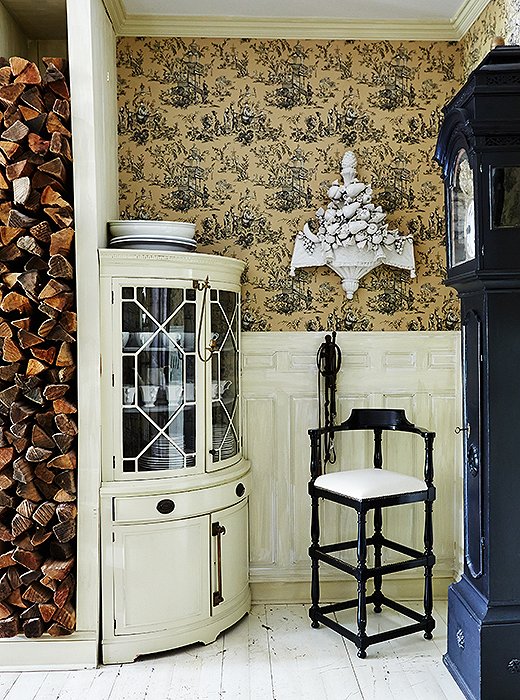
There are moments Darryl pushed his own boundaries, such as with this bold kitchen nook. “I am not generally a fan of vivid pattern, so this is a bit out on the limb, even for me,” he says of the toile-papered walls. “I often will use a bold pattern in an otherwise monochromatic house in a hall closet simply for the surprise of it.”
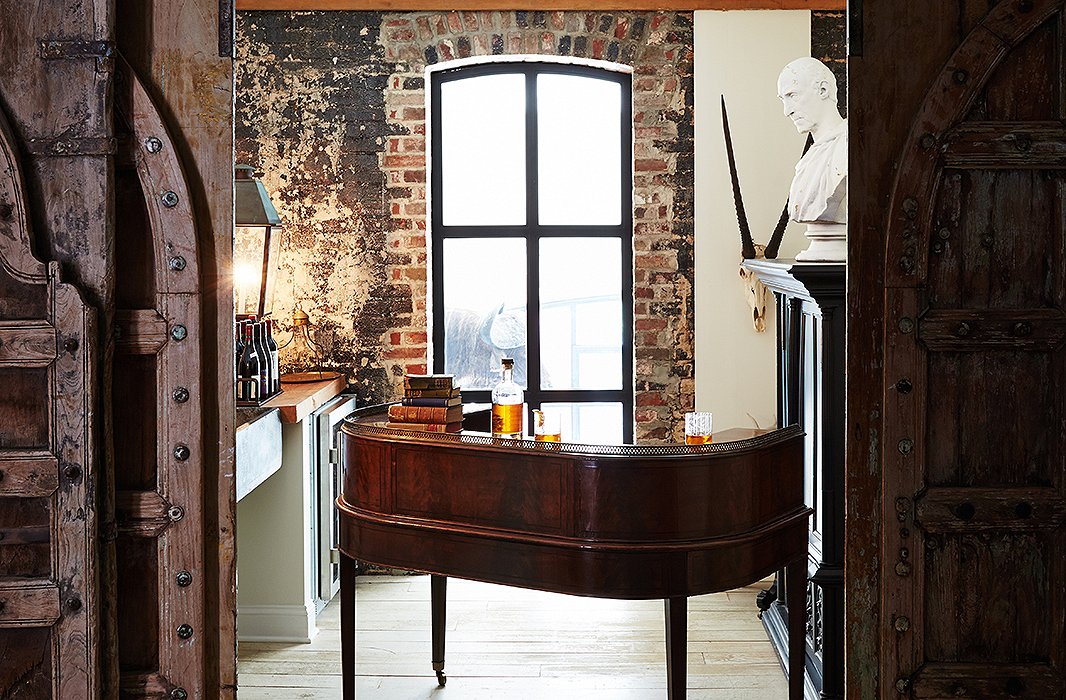
The cozy bar area, tucked away behind heavy wooden doors, exemplifies Darryl’s enduringly chic style—tranquil yet multilayered, polished yet rich with patina, impeccably curated yet lived-in—all chronicled in his books, The New Traditionaland
The Collected Home.
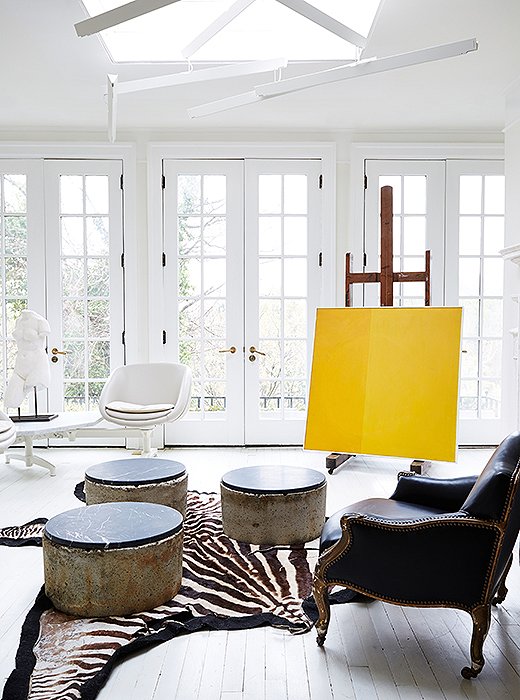

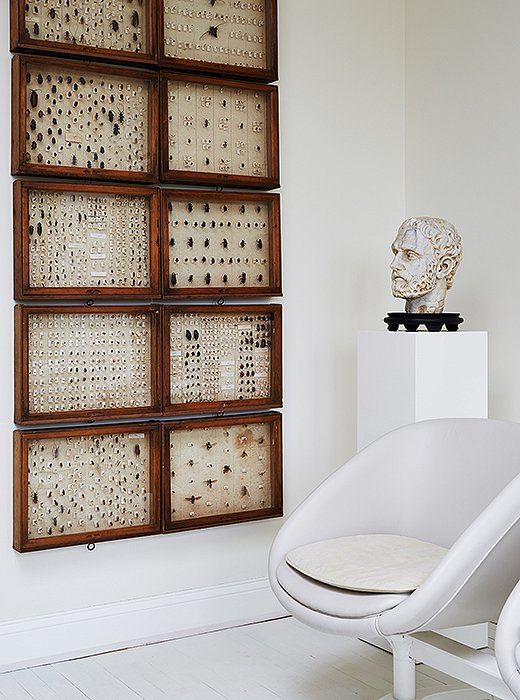
A 19th-century insect collection reflects Darryl’s philosophy for embracing the unusual and the timeless: “I would encourage anyone to be confident and buy things that they like that will withstand the test of time.”
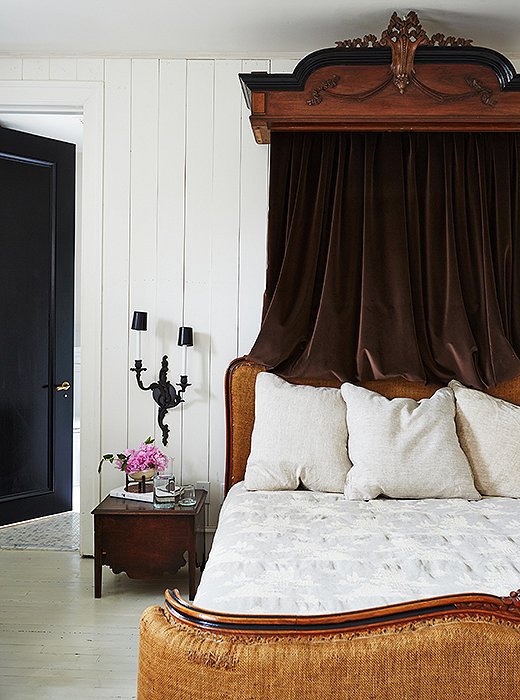
Darryl chose this guest bed for its burlap upholstery and articulated frame, which he embellished with black paint. The canopy—likely the former top of an armoire, he notes—is draped with velvet fabric. “I am generally not a fan of a canopy,” he says. “But I felt it completed the space.”
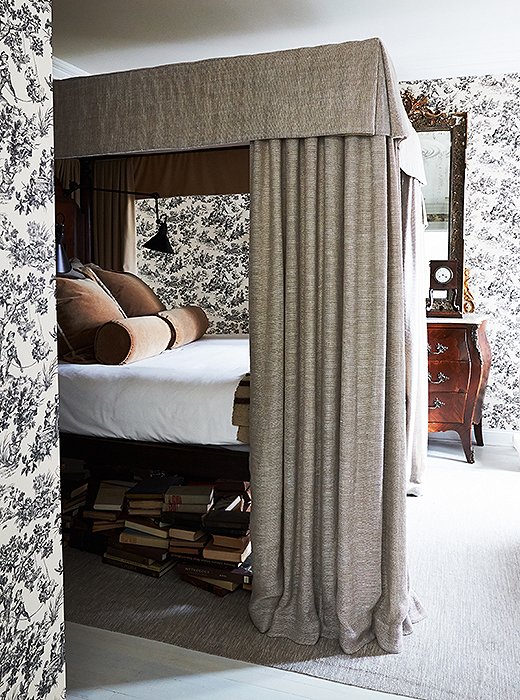
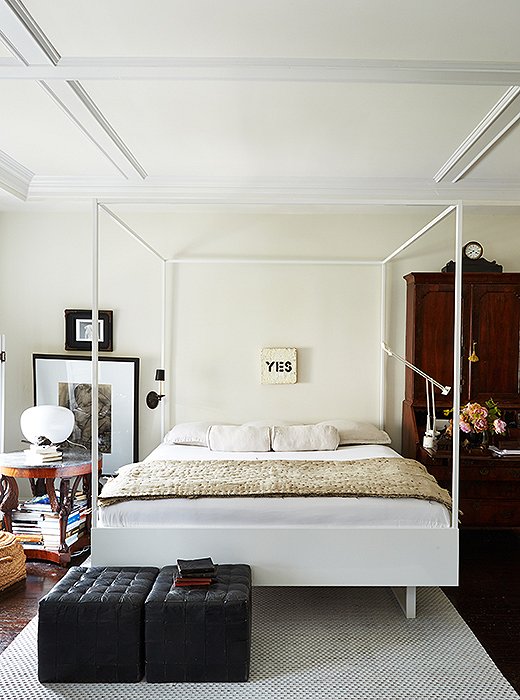
“The master bedroom is where my most valued keepsakes are in the house because this is where I tend to enjoy them best,” Darryl says.
The “Yes” sign (encaustic with a stenciled graphic) above his bed is by his artist friend Julie Wolfe. “It is rather contrarian if you know me well, so it kind of made me laugh, which is a reason I gravitate toward certain art.”
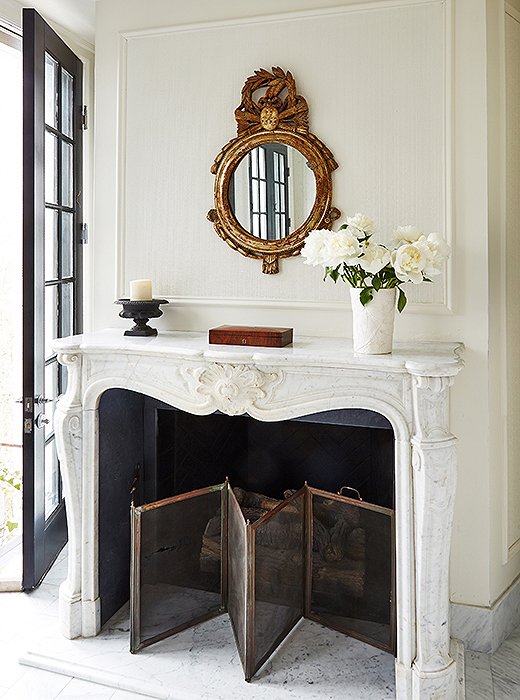
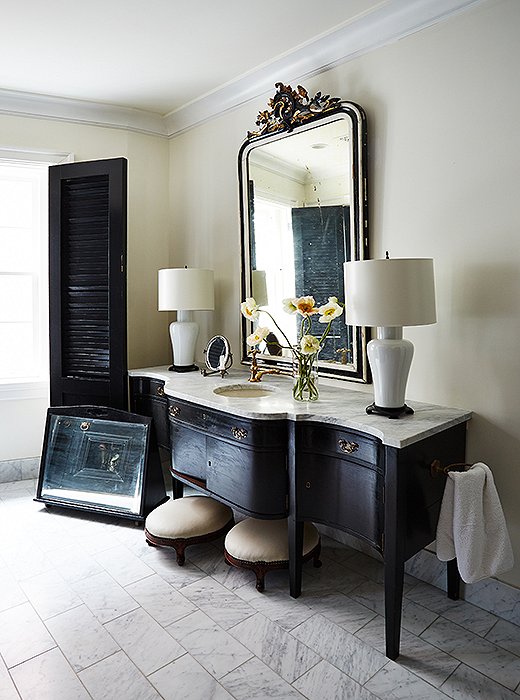
“The master bathroom is generally and hopefully a respite,” says the designer. “When I redesigned this space, I was very aware of how it needed to function for me.”
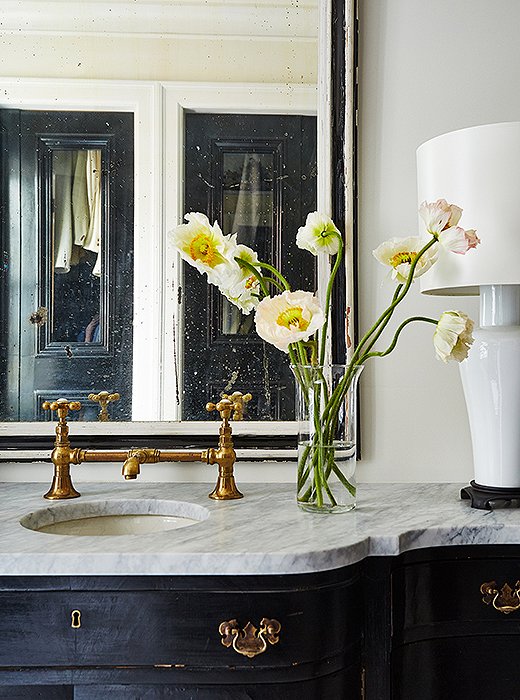
An antiqued mirror and gold fixtures are intermingled with white porcelain lamps on the sink vanity in the master bath, which is divided into a dressing room, a water closet, and a shower and tub room. “It was designed with a certain traffic mentality for getting ready quickly,” Darryl says of tailoring the space to fit his busy daily life.
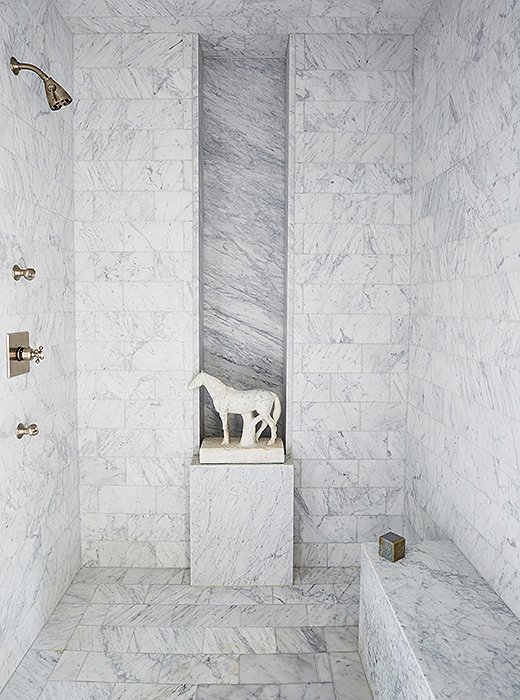
Darryl’s design for the master bath is streamlined and elegant—but not without intrigue. “I have a fascination with horses. I think they are beautiful creatures,” he says.
“I also have an incredible capacity to shop from a moving car, and I actually saw this horse from a window of my car in traffic.”

Spectacular.


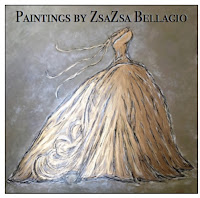
Visit:
ArtPassionZsaZsaBellagio





































